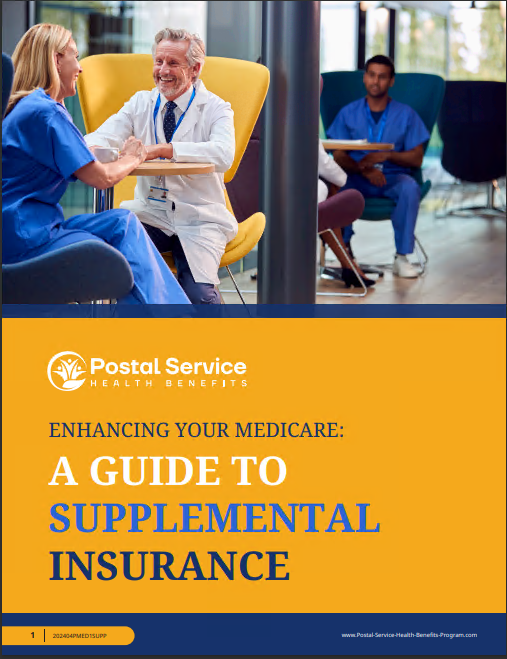Key Takeaways
- The new Postal Service Health Benefits (PSHB) program will replace the current Federal Employees Health Benefits (FEHB) for postal workers, starting in 2025.
- Postal employees and retirees must understand the enrollment process and changes to their healthcare benefits to ensure a smooth transition.
The Postal Service and OPM Are Working Together to Bring PSHB to Life—What This Means for Postal Workers in 2025
The Postal Service Health Benefits (PSHB) program is set to launch in 2025, ushering in a new era for healthcare coverage among postal workers. This shift is the result of close collaboration between the Postal Service and the Office of Personnel Management (OPM), designed specifically to address the healthcare needs of postal employees and retirees. This transition represents a major change from the longstanding Federal Employees Health Benefits (FEHB) program and carries important implications for those impacted.
What Is the PSHB Program?
The PSHB program is a newly designed healthcare system tailored exclusively for postal workers and retirees. The change follows recent legislation that separates postal employees’ health benefits from the broader federal program. The goal is to create a more efficient and cost-effective healthcare system that aligns with the unique needs of postal employees.
Unlike the previous system, where postal employees and other federal workers shared similar health plan options, PSHB will operate as a distinct program under OPM’s management. This setup aims to offer targeted coverage options and benefits that reflect the health risks and job-related needs specific to the postal workforce.
Why Is the Transition Happening?
The shift from the FEHB to PSHB results from legislative efforts aimed at reducing the Postal Service’s long-term healthcare liabilities while ensuring that postal employees and retirees receive reliable and tailored healthcare coverage. Over the years, the FEHB program has been beneficial but not necessarily optimized for the unique needs and challenges faced by the postal workforce.
The legislation mandates this new program, requiring OPM and the Postal Service to coordinate their efforts to make the transition as smooth as possible. The primary objectives are to streamline healthcare options, manage costs better, and offer a healthcare package that addresses the occupational realities of postal work, including physical demands and associated health risks.
How Will the Transition Affect Postal Employees?
1. Enrollment Process for PSHB
For postal employees and retirees, the transition to the PSHB program will come with a specific enrollment period. It is essential to understand the steps involved to avoid any gaps in coverage.
Postal workers currently enrolled in the FEHB will need to enroll in a new PSHB plan during this designated period, as FEHB coverage for postal employees will cease to exist after 2024. OPM, along with the Postal Service, will provide detailed instructions and resources to guide employees and retirees through this process. However, being proactive and prepared will be crucial to ensure continuous healthcare coverage.
2. Impact on Retirees
Retirees will also be affected by this shift. Those currently covered under FEHB will transition to PSHB and will need to select a suitable plan under the new system. Retirees must closely monitor communications from OPM and the Postal Service to ensure they understand the changes and any necessary actions to maintain their healthcare coverage.
For retirees eligible for Medicare, there will be additional coordination between Medicare and the PSHB plan. Understanding how PSHB integrates with Medicare is vital to make the most of available healthcare benefits and avoid unnecessary costs.
3. New Health Plan Options
The PSHB program is expected to offer a range of health plans similar to those previously available under FEHB but with adjustments tailored for postal workers. The exact details of these options will be provided closer to the enrollment period, but postal employees and retirees can anticipate that the new plans will emphasize affordability and access to essential healthcare services.
OPM is working to ensure that PSHB options align with the health demands typical of the postal workforce. Plans will likely address preventive care, chronic conditions management, and access to specialists, aligning with what employees need based on their work environments and physical job requirements.
What Do Postal Employees Need to Know About Costs?
Understanding Premiums and Coverage Costs
While exact premium figures and plan details will be released as the launch date approaches, it’s crucial for postal workers to be aware of the cost structures associated with PSHB. The objective is to provide cost-efficient healthcare options, but prices may vary depending on plan choice and family coverage needs.
OPM has stated that it aims to keep the program’s costs competitive while ensuring quality coverage. Postal employees and retirees should familiarize themselves with the different tiers of plans offered under PSHB, which will include options for both individual and family coverage.
Medicare Coordination
For those eligible for Medicare, there will be integrated options to optimize coverage and minimize out-of-pocket expenses. Postal retirees enrolled in Medicare should ensure that their PSHB plan complements their Medicare benefits, providing a seamless healthcare experience without unnecessary overlap in coverage.
How Can Postal Employees Prepare for the PSHB Enrollment?
1. Stay Informed
Keeping updated on PSHB program developments is crucial. The Postal Service and OPM will provide regular updates and information sessions as the program launch nears. Engaging with these resources is essential for understanding plan options, costs, and the enrollment process.
Postal employees should also monitor official websites and portals that OPM and the Postal Service will use to communicate critical information about the PSHB program. Staying informed will help ensure a smooth transition and provide ample time to compare plan options.
2. Evaluate Current Healthcare Needs
Postal workers and retirees should assess their healthcare needs in preparation for the transition. Evaluating one’s health conditions, frequency of medical visits, and required medications will help determine which plan options under PSHB will be most suitable.
Understanding whether a high or low premium plan would best suit their situation based on anticipated healthcare usage will be beneficial. By doing so, employees and retirees can align their choices with their health priorities and budget.
3. Review Medicare Enrollment Status
Retirees who are eligible for Medicare should review their enrollment status and understand how their Medicare coverage will work with the new PSHB program. Properly integrating Medicare benefits with PSHB can reduce healthcare expenses and provide more comprehensive coverage.
What Changes Can Postal Workers Expect in Coverage Options?
The PSHB program is designed to provide coverage options that align closely with the occupational needs of postal employees. Plans will likely emphasize preventive healthcare, given the physical nature of postal work and the associated risks. Coverage for specialized care, such as musculoskeletal health services, may also be prioritized.
Changes in Network Availability
Network options under the new PSHB may differ from those previously available through FEHB. Employees should review which healthcare providers are included in the PSHB network and determine if their current doctors and specialists will be covered under the new plan. If any adjustments are needed, employees should make arrangements before the transition.
Additional Wellness Programs
The PSHB program is expected to include wellness and preventive care programs tailored for postal workers. Employees may have access to fitness programs, mental health resources, and other wellness initiatives aimed at promoting overall health and reducing long-term healthcare costs.
What Should Employees Do if They Have Questions About PSHB?
Postal employees and retirees should utilize resources provided by the Postal Service and OPM to answer any questions about the PSHB program. Contacting the dedicated support lines and attending any informational sessions can help clarify details about enrollment, plan options, and costs.
Additionally, those with complex healthcare needs or questions about Medicare integration may want to consult with licensed insurance agents who specialize in federal and postal employee benefits. These professionals can offer personalized guidance and help navigate the complexities of the transition.
Navigating the Transition Smoothly
The upcoming shift to PSHB represents a significant change for postal employees, and understanding how to navigate the new system will be vital. By staying informed and proactive, postal workers and retirees can ensure they choose the best healthcare options to meet their needs in 2025 and beyond.
What’s Next for Postal Workers?
As the PSHB program’s launch date approaches, postal employees and retirees must prepare for the upcoming changes. The goal of the Postal Service and OPM is to provide a seamless and well-supported transition, but it is ultimately up to each individual to engage with the process and make informed healthcare decisions.
Preparing for PSHB Enrollment
Postal workers should be prepared for an upcoming communication push from OPM and the Postal Service, which will outline specific steps for PSHB enrollment. By planning ahead, they can avoid potential coverage lapses and ensure they select the best possible plan option.
Looking Forward to 2025
As postal workers and retirees move toward the 2025 launch of PSHB, they should keep healthcare needs, cost considerations, and plan details in mind. The PSHB program represents a significant step forward in providing tailored healthcare coverage for the postal workforce, and by staying informed, employees can make the most of this new opportunity.
Anticipating Changes in Healthcare Benefits
With the new PSHB program, the Postal Service aims to enhance its benefits offering by focusing specifically on postal employees’ health needs. Those affected by the transition should use the time leading up to the program’s rollout to familiarize themselves with their options and make informed decisions that suit their healthcare requirements.






